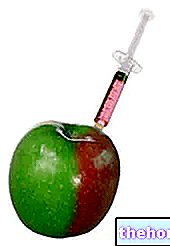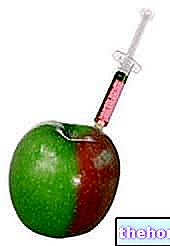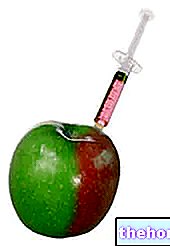The ADI (Acceptable Daily Intake) or DGA (Admissible Daily Intake) establishes the amount of a certain substance that a person can take every day, for life, without consequences for health. This quantity is expressed in milligrams of product per Kg of body weight Adults, it is therefore understandable, tolerate certain substances better than children.
How is the value of the ADI established?
The permissible daily dose of a food additive is proposed by the manufacturer on the basis of experiments performed on animals, and verified by a control office. By administering food to rodents, the maximum degree of toxicity is first ascertained. The latter is measured by taking into account the amount of substance that causes the death of 50% of the guinea pigs. This dose is called DL (lethal dose at 50%).

A test is performed over the next 90 days to determine sub-chronic toxicity (incomplete toxicity). Finally, another 2 years of research is needed to establish chronic toxicity (toxicity that occurs slowly, over a longer period of time). Finally, the amount of additive that did not cause damage of any kind on the guinea pigs is provided. The concentration that proved harmless on guinea pigs is expressed in milligrams of additive per kg of feed. This value is converted on the basis of the harmless dose administered to the individual guinea pig, and expressed in daily milligrams of additive per kg of body weight.
Since the ADI value must be valid for people, the harmless dose administered to the guinea pig is divided by 100. This factor 100 is composed of a factor of 10, which takes into account the risks of transmission to humans, multiplied by a second factor of 10. , considered as a safety factor.
For example, the ADI value for SODIUM NITRATE is 0.1 milligrams. This means that an adult weighing 70 kg can take up to 7 milligrams (70x0.1 mg) of sodium nitrate daily, without this causing damage to health; consequently it is understood that the dose that can be safely assumed varies according to the weight of the person being examined.
Scientists around the world are currently examining the ADI factor and discussing new principles that better assess health risk.
Although the concept of ADI is critically evaluated, its values represent the only scientific basis currently present, and risk estimation can only be done with the help of this concept. As long as the alternatives discussed are not recognized internationally, the method currently in use must still be used. However, there are new toxicological approaches that feed into future programs for risk assessment.
Some research shows that for most of the additives used today there is no need to fear exceeding the daily doses currently allowed, even if certain foods with additives are consumed above average. However, according to some scientists, exceeding the ADI values involves risks (this is particularly true for groups of people with special eating habits and in specific physiological situations such as pregnancy).
- The additive MUST NOT REACT with the food or with one of its constituents giving rise to one or more toxic compounds. Among the various examples that can be included, the following are particularly prominent:
- Nitrite, as it is or formed from the added nitrate, in the presence of secondary amines, can originate N-alkyl-nitrosamines, powerful carcinogens. Therefore caution is required in the use of these additives, hoping to find more satisfactory substitutes;
- The AGENE process, treatment of flours with nitrogen trichloride, was abandoned when it was found that it reacted in particular with the methionine of the gluten giving rise to a toxic sulfoximine;
- Sulfur dioxide breaks down thiamine (vitamin B1): therefore its use is banned from foods that represent a dietary source of this vitamin
- Diethylpyrocarbonate, a powerful antiseptic, under certain conditions, before being broken down into its constituents (ethyl alcohol and carbon dioxide), can react, for example in wines, with ammoniacal nitrogen and generate urethanes, carcinogens. For this reason the use of compound was abandoned in oenology;
- The additive MUST NOT MASK alterations in the food. For this reason, sulphite has been banned from "use, especially in minced meat, where" it has been replaced by "ascorbic acid or better by scrupulous hygiene rules which also include storage at low temperatures, and if possible vacuum packed;
- The additive MUST NOT MASK commercial fraud;
- The additive MUST COMPLY WITH defined PURITY STANDARDS, especially as regards processing residues and impurities, and toxic metal traces;
- The additive MUST BE AVAILABLE analytical methods, as simple as possible, suitable for the recognition and quantitative determination in all foods for which its use is permitted.
- All permitted additives must appear in POSITIVE LISTS, edited by the Health Administration. The positive lists must be constantly updated, in relation to the continuation of the toxicological research.





























